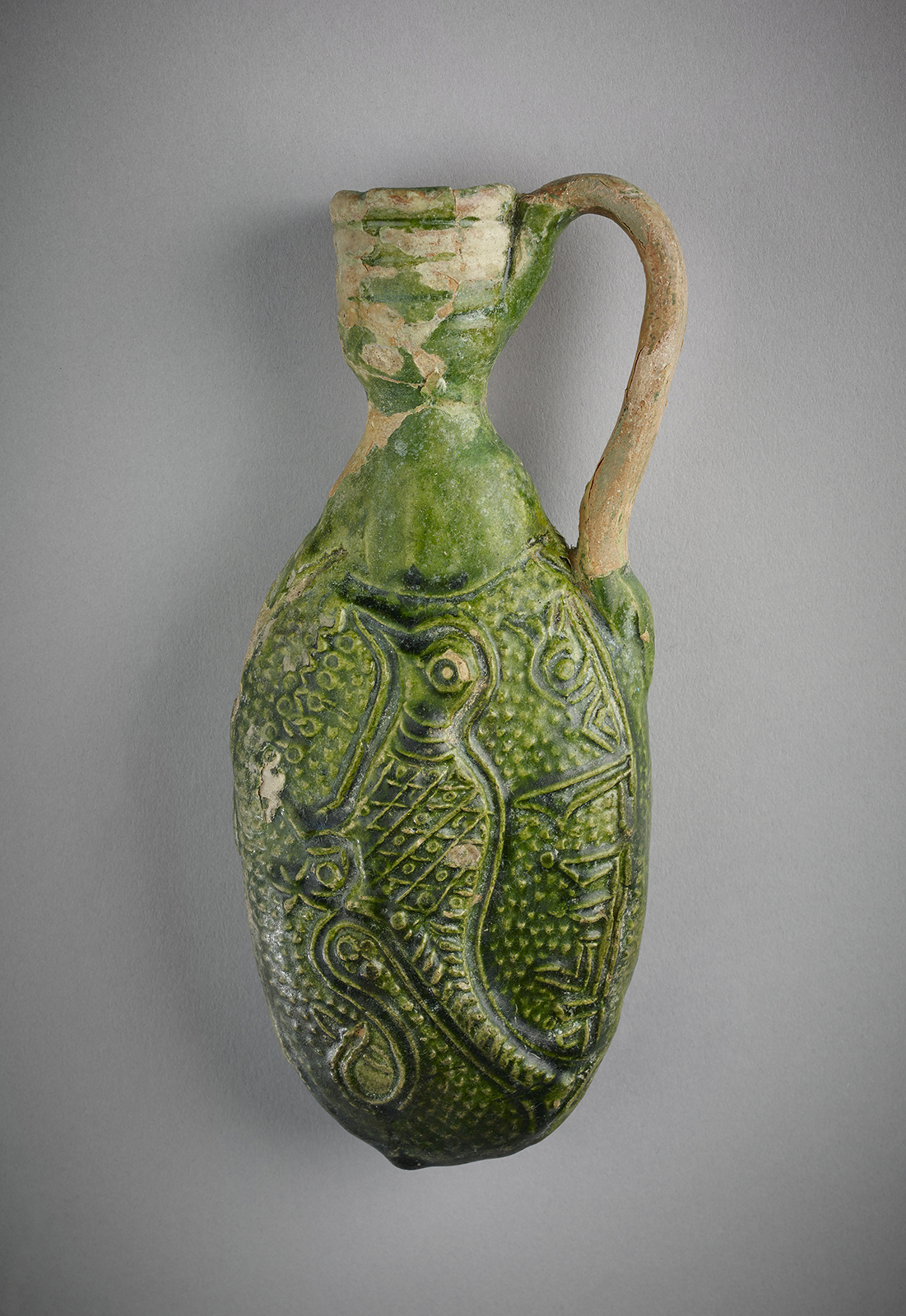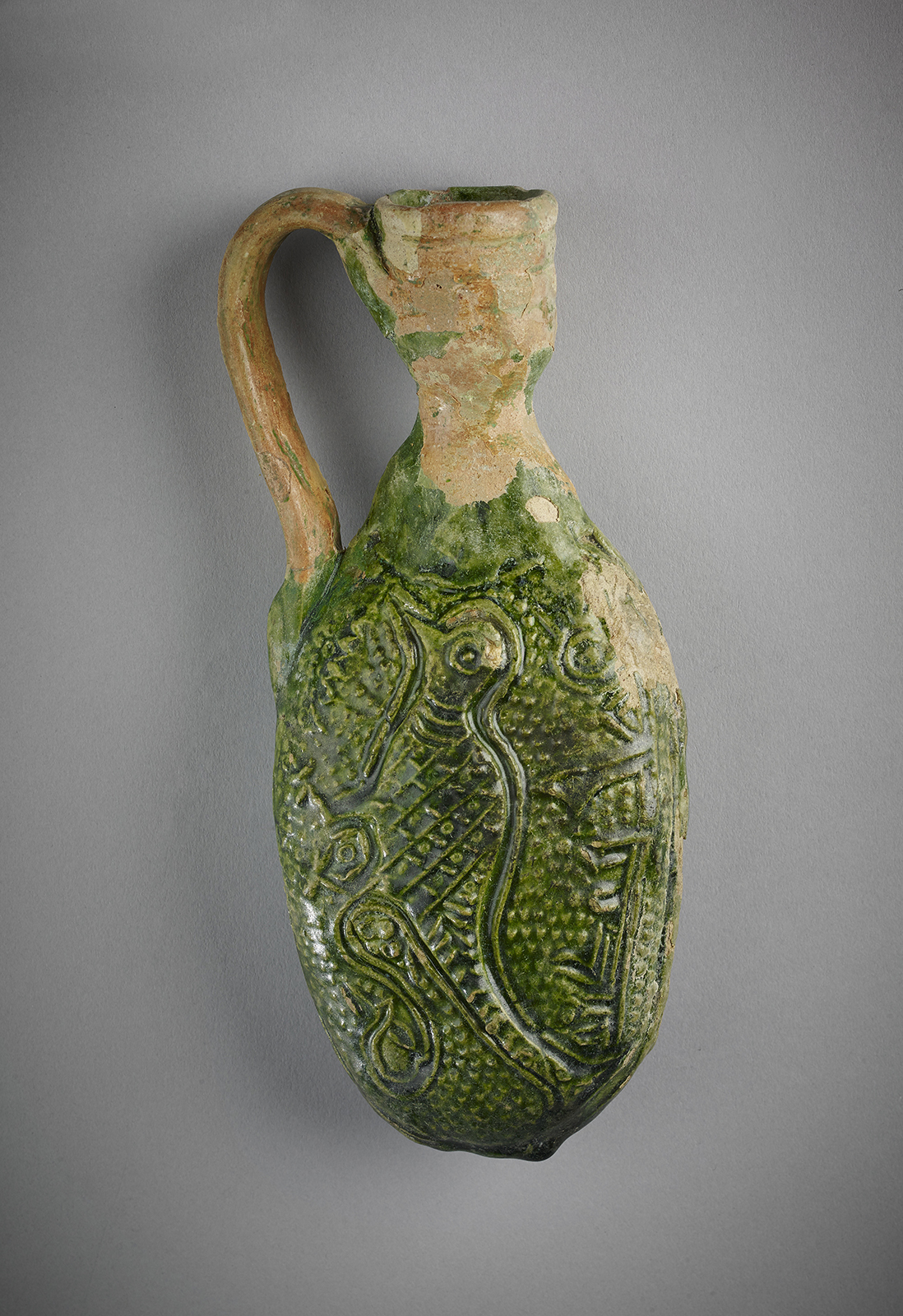Click on the image to zoom
Ewer, possibly a pilgrim flask
- Accession Number:AKM540
- Place:Syria or Iran
- Dimensions:19 cm x 8 cm x 4 cm
- Date:9th Century
- Materials and Technique:Earthenware, moulded and with applied decoration under a transparent green glaze
While pilgrim flask shapes can be traced in the pre-Islamic Iranian world to as early as the second millennium BCE (Fehervari 2000, p. 29), flasks covered in glaze date to the later pre-Islamic Parthian (2nd c. BCE - 3rd c. CE) and Sasanian (2nd-7th c. CE) periods. According to Oliver Watson, in the early Islamic period, three distinct trends of glazed pottery appear, including the continuation of pre-Islamic glazed ceramics, the invention of new glazed ceramics, and the addition of new glazes on previously unglazed wares (Watson 2004, pp. 161-62). The present bottle falls within the first category: it has an oval form, its surface decorated with impressed and carved patterns and featuring the figure of a bird with a fish-like tail. The existence of an Arabic inscription in kufic, possibly a blessing, distinguishes the flask from its pre-Islamic models; the outline format of the calligraphy can be found on early ceramic dishes from this part of the world (see, for example, a dish in the David Collection, Copenhagen, published in von Folsach 2001, p. 129 [no. 99, inv. no. 50/1999]; and one in the British Museum, London, published in Pancaroglu 2007, p. 29 [fig. 14, inv. no. OA1963.4-24.1]). The ceramic technique and bird motif, however, pre-date the Islamic period. Representations of birds in profile may have been inspired by Sasanian prototypes of different media (Auld 2005, p. 5) (see Harper 1978, pp. 63-65 [nos. 19, 21, 26, 49, and 77]). The shape of the present flask is rare among the variety of Islamic pilgrim flasks; the closest parallel found for it so far is also a one-handled vessel with a design of birds carved in relief, which is in a Japanese private collection.
References
Géza Fehérvári, Ceramics of the Islamic world in the Tareq Rajab Museum. London 2000. ISBN: 9781860644306
Oliver Watson, Ceramics from Islamic Lands. London, 2004. ISBN: 9780500976340
Kjeld von Folsach, Art from the World of Islam in The David Collection. Copenhagen: Davids Samling, 2001. ISBN: 9788788464214
Oya Pancaroblu, Perpetual Glory. Medieval Islamic Ceramics from the Harvey B. Plotnick Collection. Chicago 2007. ISBN: 9780300119435
Note: This online resource is reviewed and updated on an ongoing basis. We are committed to improving this information and will revise and update knowledge about this object as it becomes available.




